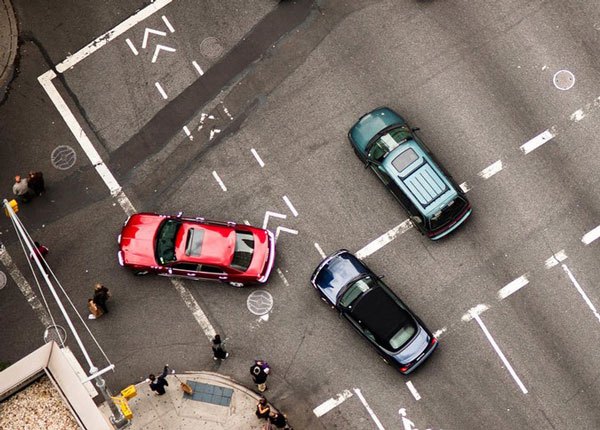
Changing Lanes Like A Pro: Step-by-Step Guide For Avoiding Unsafe Lane Change
Updated Oct. 30, 2020New drivers must learn how to change lanes safely and practice the maneuver as often as possible – there is more to it than you think. Changing lanes unsafely endangers you and everybody with whom you are sharing the road! Getting marked down for an unsafe lane change during the driving test will probably cost you your license.
Here, we will teach you how to change lanes safely and responsibly. Follow the steps included below and changing lanes should not cause a problem during your DMV drivers test or anytime thereafter! We discuss which lane you should choose elsewhere. Make sure you check that information out before driving your car on multi-lane roads and highways.
When do you change lanes?
You will put yourself at risk every time you change lanes. It is important to understand this and avoid changing lanes unless you have a solid reason to do so. Weaving in and out of traffic with frequent lane changes is an extremely dangerous driving habit. Making hurried lane changes is equally as dangerous; always plan ahead and leave yourself enough time to maneuver.
Here are some situations in which changing lanes may be necessary:
- 1

There is a hazard or obstacle in your lane which cannot be avoided by changing lane position.
- 2

You must change lanes to turn at an intersection.
- 3

The lane you are currently in is ending.
- 4

You wish to pass the vehicle in front of you. Keep in mind that there is more to passing other vehicles safely than simply learning how to change lanes.
- 5

When you must move over for an emergency vehicle parked by the roadside.
How to change lanes safely
Only change lanes when you are certain there is a large enough gap in the traffic for you to do so comfortably. You will find more specific guidance concerning the space required for lane changes in your state driving manual; most handbooks instruct drivers to merge into an adjacent lane only when there is a four-second gap in the traffic.
Moving into a space of this size will leave just a two-second gap between you and the vehicles to your front and rear. Having completed the lane change you will need to increase your following distance to expand these gaps. Do not brake suddenly having changed lanes, as the driver to your rear may hit you.
These tips will help you change lanes safely:
- 1

Start by signaling your intention to change lanes with your turn indicators. Hand signals can be used when your signal lights are broken or ineffective.
- 2

Use your rear-view and side mirrors to check there is enough space behind you to complete the lane change.
- 3

Check around your vehicle for traffic.
- 4

You must check your vehicle’s blind spots by turning to look over your shoulder, as your mirrors cannot cover everything. It is likely you will lose marks during the driving test if you do not turn your head while changing lanes.
- 5

Merge into the adjacent lane only when you can see there is enough space and that no other drivers will get in the way.
- 6

When the maneuver is complete, deactivate your turn signal.
Check road markings when changing lanes
Always check the road markings which separate your lane from the adjacent lane you wish to merge with, before beginning the maneuver. A broken white line indicates that changing lanes is permitted, and you may proceed with caution. Lane changing is not permitted when a solid white line separates two lanes. Lane changes are usually prohibited due to poor visibility or another environmental factor that would make the merge unsafe.
Changing lanes at an intersection / unsafe lane change
Most drivers believe that changing lanes at an intersection is illegal, though this is often a misconception. Only a handful of states have laws explicitly prohibiting changing lanes at an intersection; be sure to check your own driving handbook for details.
It is essential to understand that unsafe lane changes are prohibited everywhere. So, even if switching lanes at an intersection is not illegal in your state, you could still be ticketed for doing it unsafely if a police officer sees you. It is usually not safe to change lanes at an intersection and is generally considered to be an irresponsible driving practice. We strongly advise avoiding intersection lane changes unless necessary to avoid a collision!
Changing lanes at a roundabout
It is never safe to change lanes while negotiating a roundabout, or to pass other drivers. Motorists must remain in whichever lane they initially chose until they are ready to exit the roundabout; be sure to exit appropriately based on the lane you are in and the traffic. Remember that you have the option of exiting and turning around further down the road to go through the roundabout again, if you accidentally end up in the wrong lane.




